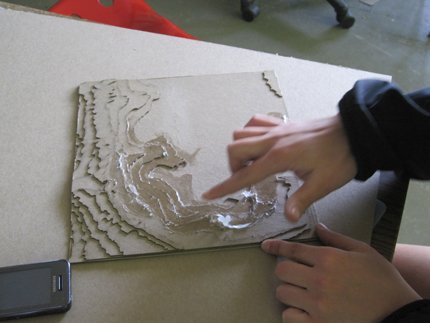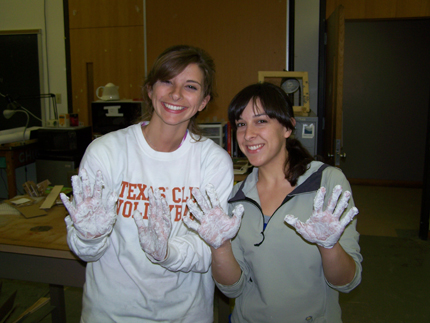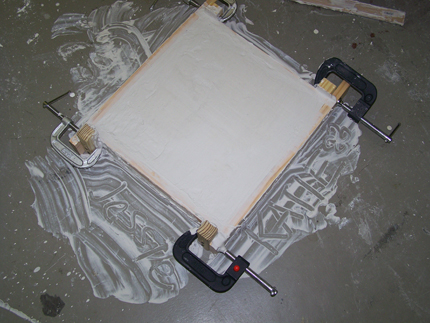Plaster Contour Model
A topographic model of the Mississippi River Basin was constructed of plaster at a horizontal scale of 1” = 33,333’ and a vertical scale of 1” = 9,600’. Each layer of chipboard represents 300’ vertically. Developed at a 4:3 ratio to match the projection capacity, the model consisted of 12 15” x 15” panels which assembled to form a 5’ x 3.75’ projection screen. The surface was designed to rest on the ground and display projection from 10’ above. 100’ contour lines were acquired, every 3rd of which was used to create inverse molds laser cut from chipboard.
To create plaster model from chipboard mold:
Two of four pieces of plywood should be cut to the exact size of the chipboard mold and a post should be screwed to the outside, flush with bottom and outer edges. The other 2 wooden pieces should be cut a few inches longer so that they can be clamped to the posts to create a tight frame around the chipboard. All four corners should be clamped to create a seamless frame.
Once the frame is tightly clamped around the chipboard, the mold and frame edges should be coated in a release agent such as Vaseline or cooking spray (not butter flavored). It is important to apply the release agent carefully at corners and edges to create clean lines.
Plaster of Paris should be mixed with water at a ratio of 2:1, for approximately 2 minutes or until clumps are fully incorporated. We used approximately 10 pounds of plaster per panel but the amount will vary depending on desired thickness of panels.
The mixture should be poured immediately into the frame filling the frame just beyond its brim to guarantee that panels line up appropriately in the vertical direction.
A screed, or wooden strip used as a leveling device, is then dragged across the top of the frame to remove excess plaster and create a smooth surface while the frame is agitated to encourage plaster to spread into cracks and air bubbles to surface. If plaster is insufficient for filling the frame, a second batch can be mixed and poured immediately. If the first pour has already begun to cure, then the second layer should be poured only after the first has hardened.
The plaster will begin to harden immediately but should be left to dry for at least one hour before frame and mold are removed. Some chipboard will stick in cracks and can be lifted out and scraped off with a pointed object.
The plaster may take several days to dry, but this process can be expedited by positioning a fan near the surface.




